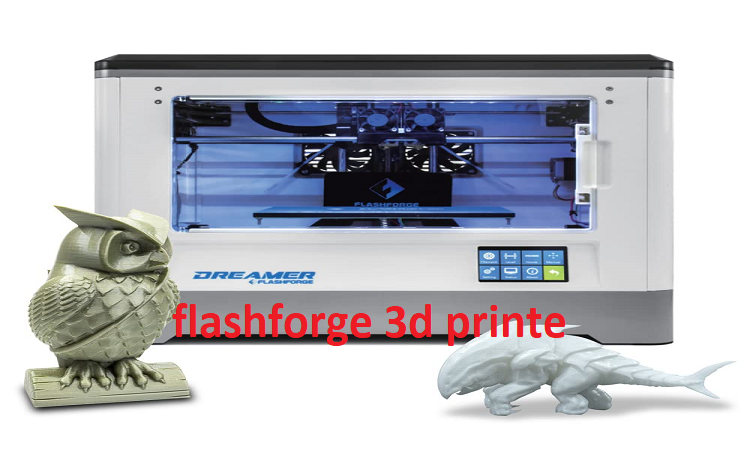FlashForge stands out in the increasingly competitive world of 3D printing by offering an array of printers suitable for beginners as well as experienced enthusiasts alike. As demand for 3D technology increases, understanding its features, capabilities and nuances becomes ever more crucial; in this article, we take an in-depth look into FlashForge printers by exploring their key models, functionalities and creative potential for users.
Understanding FlashForge 3D Printers (or 3D printers for short)
FlashForge 3D Printers are widely recognized for being user-friendly machines that deliver reliable prints consistently. Their printers are used across various industries such as education, prototyping and small scale manufacturing; FlashForge printers are particularly praised for their sturdy construction, intuitive user interfaces and consistent quality prints produced.
Key Features of FlashForge 3D Printers
FlashForge 3D printers feature various build volumes to meet various user needs. From compact models suitable for desktop use to larger printers for more comprehensive projects, users can select their ideal 3D printer from FlashForge’s selection.
Dual Extrusion: Certain FlashForge models feature dual extruders that enable users to print with multiple materials or colors simultaneously – an invaluable feature when creating intricate designs or prototypes with various characteristics.
Heated Print Bed: Many FlashForge printers feature a heated print bed to improve adhesion and reduce warping when printing with materials like ABS. A stable temperature contributes to successful and reliable prints.
Touchscreen Interface: FlashForge’s user-friendly interfaces, often including touchscreen controls, make it simple for both beginners and experienced users alike to navigate settings, load models, and initiate prints with ease.
Compatibility with Various Filaments: FlashForge 3D printers are built to work with an assortment of filaments, such as PLA, ABS and PETG filaments, making them suitable for various project requirements. Users are free to explore various materials that fit their project goals as part of this versatility.
Enclosed Print Chamber: Some FlashForge models feature enclosed print chambers for maximum control during printing. This feature is especially beneficial when working with materials that can be susceptible to temperature fluctuations.
Popular FlashForge Models
Its The Creator Pro is an ideal choice for both novice and advanced users. Featuring dual extrusion systems, heated print beds, and an enclosed build chamber to maintain consistent temperatures for reliable prints, the Creator Pro makes an excellent first or addition printer choice.
FlashForge Finder: Ideal for beginners, the FlashForge Finder 3D Printer features an accessible touchscreen interface with Wi-Fi connectivity and an assisted bed-leveling system to make 3D printing an easy process.
FlashForge Adventurer 3: The FlashForge Adventurer 3 is an affordable 3D printer featuring an enclosed build chamber, touch interface, wireless connectivity and quick change nozzles for easier maintenance.
FlashForge Guider II: Created specifically to handle larger prints, the Guider II boasts an expansive build volume and offers an interactive touchscreen interface, fully enclosed chamber construction, and compatibility with numerous filament types.
Tips for Optimizing Your FlashForge 3D Printer
Calibration: Regular calibration of your FlashForge 3D printer ensures accurate prints. Be mindful to balance bed leveling, nozzle height and filament settings for optimum results.
Experiment With Filaments: Leverage your FlashForge printer’s compatibility with different filaments to explore their specific characteristics and applications. Experiment with different materials in order to expand your understanding.
Maintenance: Regular 3D printer maintenance is key to its lifespan. Keep the print bed free of debris, lubricate all moving parts regularly, and regularly inspect its nozzle for signs of wear or clogs.
Filaments from FlashForge Printers Only: While FlashForge printers are capable of printing using various filament types, using genuine FlashForge filaments ensures compatibility and high-quality prints.
Explore Dual Extrusion: If your FlashForge printer supports dual extrusion, take advantage of it by printing multi-material or multi-color prints. This feature opens up new opportunities for creativity and design complexity.
Conclusion
FlashForge 3D printers have become synonymous with reliability, versatility and user-friendly interfaces. No matter your experience level or budget needs are, there is an array of models from FlashForge available that meet them all – from beginners just beginning their 3D printing journey to experienced users seeking advanced features. By understanding key features such as popular models or tips for optimization users can unlock their full creative potential of these machines as they continue to make way in 3D printing technology – helping bring ideas to life step by step!
